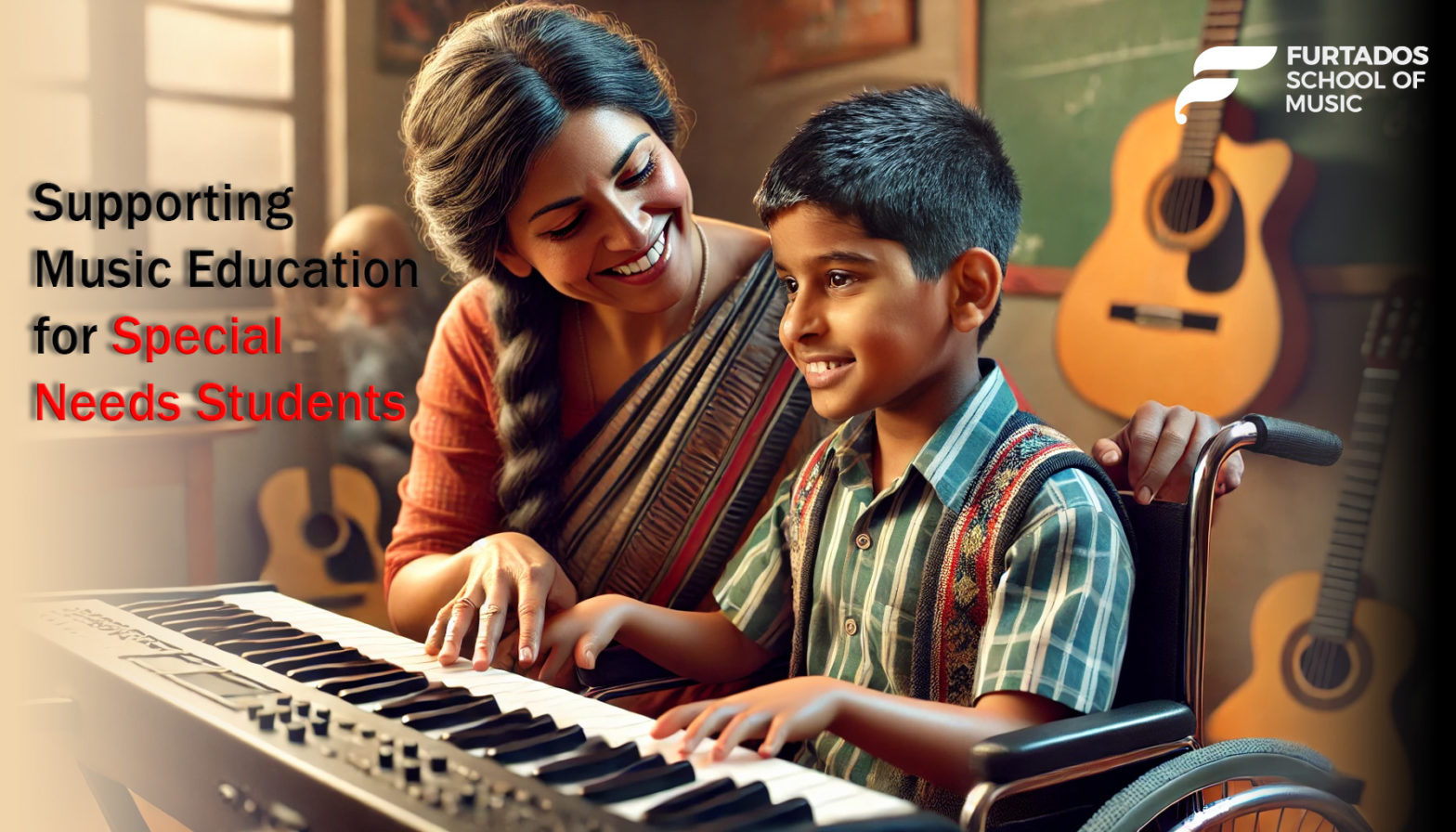Music transcends language barriers and provides a unique avenue for expression and engagement. For special needs students, including those with autism spectrum disorder (ASD), Down syndrome, or learning disabilities, inclusive music instruction offers a range of cognitive, emotional, and social benefits:
Benefits of Music Education for Special Needs Students!
- Cognitive Development: Engaging in music activities stimulates various parts of the brain, enhancing cognitive skills such as memory, attention, and problem-solving. Structured music lessons can improve academic performance and promote critical thinking skills.
- Emotional Expression and Regulation: Music serves as a powerful tool for emotional expression and regulation. Special needs students often struggle with verbal communication of emotions. Music provides a non-verbal outlet for expressing feelings, reducing stress, and promoting emotional well-being.
- Social Interaction and Communication: Group music sessions foster social interaction, teamwork, and communication skills. Through collaborative activities and adaptive music techniques like ensemble playing or choir participation, students learn to listen, cooperate, and communicate effectively with peers and instructors.
- Motor Skills Development: Playing musical instruments or engaging in rhythmic activities improves motor coordination and fine motor skills. For students with physical disabilities, adaptive music instruments and tailored activities ensure inclusive participation and skill development.
- Confidence and Self-Esteem: Success in music activities boosts self-confidence and self-esteem. Special needs students experience a sense of accomplishment and pride, contributing to improved motivation and a positive attitude towards learning.
Effective Strategies for Incorporating Music in Special Education
Incorporating music effectively into special education requires tailored strategies and approaches that accommodate diverse needs and abilities:
- Individualized Learning Plans: Develop personalized music education plans that cater to each student’s strengths, challenges, and learning preferences. Adapt teaching methods, materials, and instruments to meet individual needs.
- Multisensory Approaches: Utilize multisensory techniques to enhance engagement and comprehension. Combine auditory, visual, and kinesthetic learning experiences to reinforce musical concepts and skills.
- Adaptive Instruments and Equipment: Invest in adaptive music instruments and accessibility in music that accommodate physical disabilities or sensory sensitivities. Provide students with access to specialized tools that facilitate active participation and skill development.
- Visual Supports and Cueing: Use visual aids, pictorial schedules, and cueing systems to facilitate understanding and communication during music lessons. Visual supports enhance learning comprehension and promote independence.
- Collaborative Learning Environments: Foster a supportive and inclusive classroom culture where diversity is celebrated. Encourage peer interaction, mentorship, and collaboration through group music activities and ensemble performances.
Creating Inclusive Learning Environments Through Music
Music plays a pivotal role in creating inclusive learning environments where every student feels valued and supported:
- Promoting Diversity and Inclusivity: Integrate diverse musical genres, cultural traditions, and styles into the curriculum. Celebrate the richness of musical heritage and encourage students to explore and appreciate different musical expressions.
- Building Empathy and Understanding: Use music as a catalyst for promoting empathy and understanding among students. Through music, students learn to appreciate differences, respect individual perspectives, and embrace diversity within their community.
- Professional Development for Educators: Provide ongoing training and professional development opportunities for music educators and special education teachers. Equip them with strategies, resources, and knowledge to effectively support special needs students in music education.
Final Note: Embracing the Transformative Power of Music
Incorporating music education into special needs classrooms is not merely about teaching notes and rhythms; it is about fostering holistic development, enhancing social skills, and nurturing emotional well-being.
By embracing the transformative power of music with FSM, educators can create enriching learning experiences that empower special needs students to thrive academically, socially, and emotionally.
Together, let us celebrate the diversity of learners and harness the universal language of music to build inclusive communities where every student can shine.
